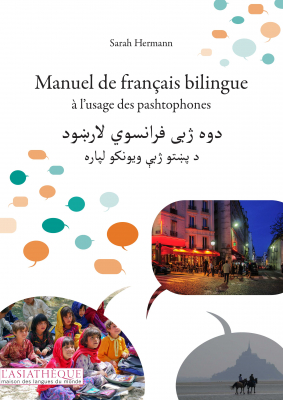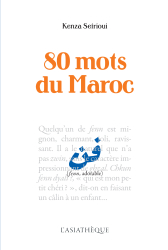Details
Format: Paperback
ISBN: 9782360571949
Collection: Les manuels de français bilingues
17 x 24 cm
Weight: 881 gr
Pages: 516
First publication: 29/06/2022
Last printing: 06/2023
CLIL: 3050
Manuel de français bilingue à l'usage des pashtophones (Livre + audio)
A method based on mutual understanding and fraternity
“You must have pulled yourself away from everything, me from nothing. You are migrants and you must be born a second time. I teach you to say "I am" in the indicative, the imperfect or the future tenses. But how "to be" when you have lost so much? "(Marie-France Etchegoin, "I am learning French", Jean- Claude Lattés, 2018). It is in this approach of respect for the learner and for her or his language that Sarah Hermann stands. The method is classic: dialogue, vocabulary, grammar, exercises, but the novelty lies in bilingualism. Each lesson is given in French (mainly at used by teachers) and in Pashto. Knowing well the grammatical structures of pashto and nourished by her teaching experience and her career in action humanitarian, Sarah Hermann points out the differences in pronunciation or construction phrases that Pashtophones can run up against by prescribing each time to teachers and learners checking and rehearsing. The book contains many exercises (with answers) and fun pictorial materials designed both as debriefings and moments of personal expression. An audio recording allows the learner to listen to the lesson again, to become familiar with the French pronunciation and practice (available via QR codes along the book or with free download on this website). Thus given confidence, the Pashtophone learner avoids stress, "the main enemy of lessons languages ”(ibid, M.- F. Etchegoin), and is progressing rapidly.
CONTRIBUTORS' BIOGRAPHIES
Sarah Hermann
Sarah Hermann is a sound engineer by training, a pashto student at INALCO since 2017. Currently working for the Red Cross in Afghanistan, she has been involved in several associations of aid to exiles in which she taught French, in particularly for pasht-speaking audiences. It also provides assistance to exiles by accompanying them in their administrative, legal and social procedures, which allows them to be aware of their daily needs. His knowledge of pashto and the structures of French, as well as the support of his students who have experimented and enriched his pedagogy, he made it possible to carry out this project which was close to his heart of a bilingual French manual - pashto learning French for exiles.
TABLE OF CONTENTS
Avant-propos
Remerciements
Note à l’enseignant
Note à l’étudiant
Pour bien débuter - Guide de prononciation du français
Leçon 1 – Le verbe « être » au présent
Leçon 2 – La négation et l’expression « est-ce que »
Leçon 3 – Le verbe « avoir » au présent
Leçon 4 – « Il y a » et « c’est »
Leçon 5 – Le genre des noms
Séance bilan – Leçons 1 à 5
Leçon 6 – Les verbes en -ER au présent
Leçon 7 – Les mots interrogatifs ; compter de 1 à 10
Leçon 8 – Le verbe « faire » au présent
Leçon 9 – Le verbe « prendre » au présent ; compter de 11 à 20
Leçon 10 – Les articles en français
Séance bilan – Leçon 6 à 10
Leçon 11 – Le verbe « aller » au présent ; exprimer la destination et la localisation
Leçon 12 – Le féminin des noms et des adjectifs
Leçon 13 – Le verbe « venir » au présent ; le passé récent ; exprimer la provenance et le moyen de transport
Leçon 14 – Le pluriel des noms et des adjectifs ; les verbes du 1er groupe (cas particuliers)
Leçon 15 – L’interrogatif « quel » ; compter de 20 à 69
Séance bilan – Leçons 11 à 15
Leçon 16 – Les adjectifs possessifs et les pronoms démonstratifs
Leçon 17 – Les verbes « pouvoir », « vouloir » et « devoir » au présent
Leçon 18 – Les verbes pronominaux ; dire l’heure
Leçon 19 – La comparaison et le complément du nom
Leçon 20 – Exprimer la quantité ; les articles partitifs
Séance bilan – Leçons 16 à 20
Annexe 1 – Corrigés
Annexe 2 – Nature et fonction des mots
Annexe 3 – Guide d’utilisation du glossaire
Annexe 4 – Glossaire français-pashto
Annexe 5 – Glossaire pashto-français
Annexe 6 – Contenu des enregistrements











